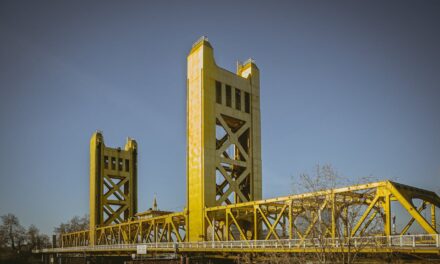New Mexico, often called the “Land of Enchantment,” has a rich and complex history.
From its early Native American cultures and Spanish colonization to its pivotal role in the American West and significant events in modern times, New Mexico’s history is marked by diverse influences and significant milestones.
Below, we explore the history of New Mexico, highlighting its foundation, major historical events, and notable landmarks.
Table of Contents
Early History
Indigenous Inhabitants and European Exploration
Before European settlers arrived, New Mexico was home to various Native American tribes, including the Navajo, Apache, Pueblo, and Comanche.
- These tribes developed rich cultures with advanced agricultural practices, trade networks, and unique architectural styles.
- Spanish explorer Francisco Vázquez de Coronado led an expedition in 1540 searching for the mythical Seven Cities of Gold, marking the first significant European exploration of the region.
The indigenous peoples and early European explorers laid the groundwork for future settlements in New Mexico.
Spanish Colonization
In 1598, Juan de Oñate established the first permanent Spanish settlement at San Juan de los Caballeros.
- The Spanish colonists introduced Christianity, new agricultural practices, and European governance structures.
- The Pueblo Revolt of 1680 temporarily expelled the Spanish, but they reasserted control in 1692 under Diego de Vargas.
These developments significantly shaped New Mexico’s cultural and economic landscape.
Key Historical Events
Mexican Independence and U.S. Incorporation
After gaining independence from Spain in 1821, New Mexico became part of Mexico.
- The area was ceded to the United States in 1848 following the Mexican-American War through the Treaty of Guadalupe Hidalgo.
- New Mexico was organized as a U.S. territory in 1850 and achieved statehood on January 6, 1912, becoming the 47th state.
These transitions marked crucial changes in New Mexico’s political status and governance.
The Long Walk of the Navajo
In 1864, the U.S. Army forced over 8,000 Navajo people to march from their homelands to the Bosque Redondo reservation in eastern New Mexico.
- This tragic event, known as the Long Walk, caused immense hardship and numerous deaths among the Navajo.
- In 1868, the Navajo were allowed to return to a portion of their homeland.
The Long Walk remains a significant event in Navajo and New Mexico history.
The Manhattan Project and World War II
During World War II, New Mexico was a key site for the top-secret Manhattan Project, which developed the first nuclear weapons.
- The initial successful test of an atomic bomb, called the Trinity Test, occurred on July 16, 1945, near Alamogordo.
- New Mexico also contributed significantly to the war effort through the Navajo Code Talkers, who used their language to create an unbreakable code.
These events positioned New Mexico as a critical player in global military history.
20th Century Growth and Development
Economic and Social Developments
Post-World War II, New Mexico’s economy diversified with growth in federal government projects, tourism, and the arts.
- Prominent research centers, including Los Alamos National Laboratory and Sandia National Laboratories, were established.
- The state also saw growth in the tourism industry, particularly around its natural parks and cultural festivals.
These developments laid the foundation for New Mexico’s modern economy.
Cultural Contributions
New Mexico is renowned for its contributions to art, literature, and cultural heritage.
- Santa Fe and Taos are famous for their vibrant art scenes, attracting artists like Georgia O’Keeffe.
- The state’s cultural festivals, such as the Albuquerque International Balloon Fiesta, draw visitors from around the world.
New Mexico’s cultural contributions have significantly shaped its identity.
Notable Landmarks
Carlsbad Caverns National Park
Home to over 119 caves formed by sulfuric acid dissolution, Carlsbad Caverns is one of the most famous national parks in the United States.
- Visitors can traverse the extensive underground chambers and observe the nightly bat flights.
Carlsbad Caverns is a testament to New Mexico’s natural wonders.
White Sands National Park
This park features the world’s largest gypsum dune field, spanning 275 square miles.
- The unique white sands offer a stunning landscape for hiking, sledding, and photography.
White Sands highlights the unique geological features of New Mexico.
Taos Pueblo
Recognized as one of the oldest and longest lasting continuously inhabited communities in the United States, Taos Pueblo features multi-story adobe buildings that have housed the Taos people for over a millennium.
- The site is a place of a UNESCO World Heritage site and a noted National Historic Landmark.
Taos Pueblo represents the enduring legacy of Native American culture in New Mexico.
Governance
State Government
New Mexico operates under a constitution adopted in 1912.
- The state government consists of the Executive, Legislative, and Judicial branches.
- The governor, currently Michelle Lujan Grisham, leads the executive branch.
The state government addresses the needs of New Mexico’s diverse population and manages its resources effectively.
Local Government
New Mexico’s local government structure includes counties, cities, and towns.
- Each level of government has specific responsibilities for services such as education, public safety, and infrastructure.
- Local governance ensures that the diverse needs of New Mexico’s communities are met.
Effective local governance contributes to the overall well-being of the state’s residents.
Demographics and Growth
Population
As of 2023, New Mexico’s population was approximately 2.11 million. The state’s demographic makeup reflects its history of Native American, Hispanic, and Anglo influences.
Diverse demographics and steady growth reflect New Mexico’s appeal as a place to live and work.
Education and Economy
New Mexico is home to several leading educational institutions, such as the University of New Mexico and New Mexico State University.
- The state’s economy is diverse, with key sectors including energy, tourism, and agriculture.
- New Mexico is also known for its technological advancements and contributions to scientific research.
These factors contribute to the state’s economic resilience and cultural vibrancy.
State of New Mexico Q&A
Q: When did New Mexico become a state?
A: New Mexico was admitted and allowed to participate in the Union as the 47th state on January 6, 1912.
Q: Who were the original inhabitants of New Mexico?
A: The original inhabitants of New Mexico included various Native American tribes such as the Navajo, Apache, Pueblo, and Comanche. These tribes had established societies with rich cultures and trade networks.
Q: What role did New Mexico play during World War II?
A: New Mexico was a key site for the Manhattan Project, which created and developed the first atomic bombs. The Trinity Test, the initial test of an atomic bomb, occurred in New Mexico in 1945. Additionally, the Navajo Code Talkers played a crucial role in the war effort.
Q: What are some notable historical landmarks in New Mexico?
A: Notable landmarks include Carlsbad Caverns National Park, White Sands National Park, and Taos Pueblo. These sites highlight New Mexico’s natural beauty, historical significance, and cultural heritage.
Q: How is New Mexico governed?
A: New Mexico operates under a constitution adopted in 1912, with an Executive, Legislative, and Judicial branch. The governor leads the executive branch, and local governance is managed by counties, cities, and towns.
Q: What is the current population of New Mexico?
A: As of 2023, New Mexico’s population was approximately 2.11 million. The state continues to attract residents with its diverse culture, educational opportunities, and economic resilience.
New Mexico’s rich history and commitment to cultural preservation make it a unique and vibrant state. By protecting its historical landmarks and fostering growth across various industries, New Mexico honors its past while looking forward to a prosperous future.





